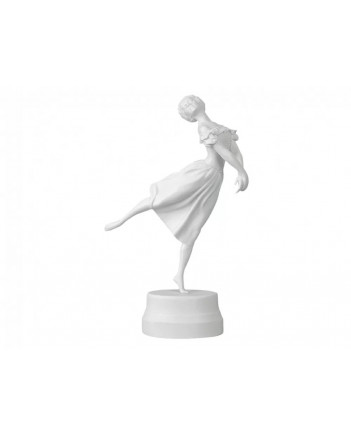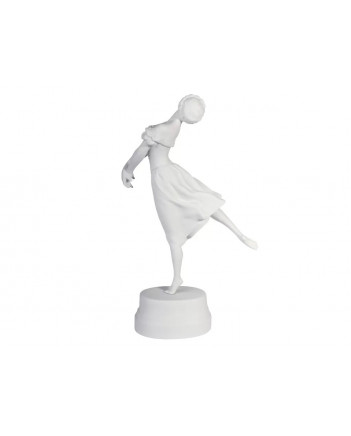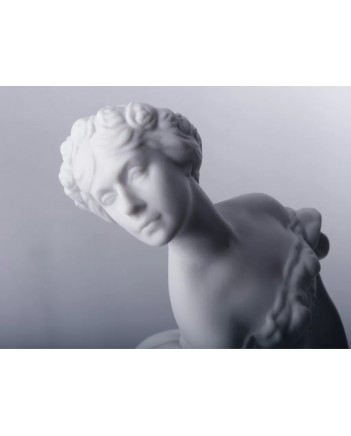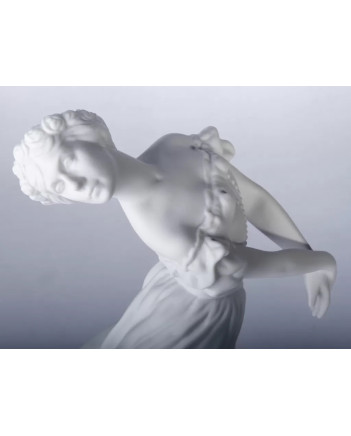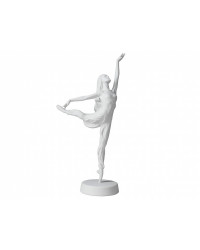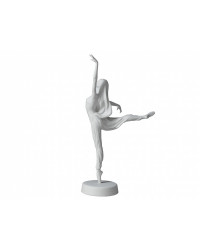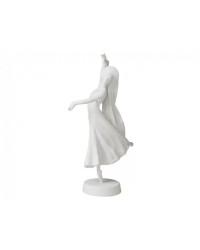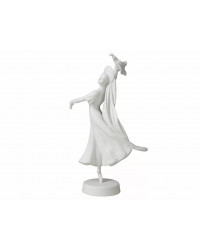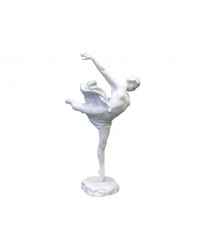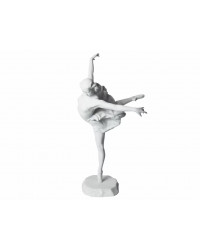LOMONOSOV IMPERIAL PORCELAIN FIGURINE BALLET GISELLE Tamara Karsavina WHITE
- Brand:: Lomonosov Imperial Porcelain Factory
- Product Code: FIGUR-5372
- Availability: In Stock
Bring the elegance of Imperial Russia with the Lomonosov Imperial Porcelain Decorative Figurine Ballet GISELLE dancer Tamara Karsavina. The decorative figurine will be a perfect gift for porcelain lovers and a perfect addition to any porcelain home decor collection.
Features:
· The original Lomonosov factory logo is on the bottom of each piece. Genuine Article - 100% Guaranteed.
· Material: hard-paste porcelain (biscuit). Made in Russia by the Imperial Lomonosov Porcelain Factory.
- Measures: L 19 cm, W 8.5 cm, H 30.5 cm/L 7.53", W 3.3", H 12".
About Ballet Dancer: Tamara Platonovna Karsavina (10 March 1885 – 26 May 1978) was a Russian prima ballerina, renowned for her beauty, who was a principal artist of the Imperial Russian Ballet and later of the Ballets Russes of Sergei Diaghilev. After settling in Britain at Hampstead in London, she began teaching ballet professionally and became recognised as one of the founders of modern British ballet. She assisted in the establishment of The Royal Ballet and was a founder member of the Royal Academy of Dance, which is now the world's largest dance-teaching organisation. Her most famous roles were Lise in La Fille Mal Gardée, Medora in Le Corsaire, and the Tsar Maiden in The Little Humpbacked Horse. She was the first ballerina to dance in the so-called Le Corsaire Pas de Deux in 1915.
The choreographer George Balanchine said he had fond memories of watching her when he was a student at the Imperial Ballet School. Shortly before 1910, she was regularly invited to dance in Paris with the Ballets Russes of Sergei Diaghilev. During her years with the company, she created many of her most famous roles in the ballets of Mikhail Fokine, including Petrushka and Le Spectre de la Rose. She danced the latter with Harold Turner.[22] She was perhaps most famous for creating the title role in Fokine's The Firebird with Vaslav Nijinsky, her occasional partner. (This role was originally offered to Anna Pavlova, who could not come to terms with Stravinsky's strikingly new score.)
Karsavina left Russia in 1918, just before Red Terror was launched by the Bolsheviks at the beginning of the Russian Civil War, and moved to Paris, where she continued her association with the Ballets Russes as a leading ballerina. (Her brother Lev Platonovich Karsavin was expelled from Russia in 1922 by the Bolsheviks on one of the philosophers' ships. In 1928 he moved to newly independent Lithuania, where he was awarded a university chair in cultural history (1928–1939), but when the Soviets occupied Lithuania, he was arrested and deported to a gulag, where he died in 1952.)
Karsavina's memoir, Theatre Street (the name of the street where the Imperial Ballet School was located, due to its proximity to the Alexandrovskii Theatre), describes her training at the Imperial Ballet School, and her career at the Mariinsky Theatre and the Ballets Russes. In the ultra-competitive world of ballet, she was almost universally beloved. Karsavina did have a rival in Anna Pavlova; yet in Theatre Street, Karsavina always writes of her with kindness and generosity, e.g. "Pavlova at that time [when she was a fellow pupil] hardly realised that in her lithe shape and in her technical limitations lay the greatest strength of her charming personality."[23] In the film, A Portrait of Giselle, Karsavina recalls a "wardrobe malfunction": during a performance one of her shoulder straps fell and she accidentally exposed herself. Pavlova reduced an embarrassed Karsavina to tears.
Story: Giselle, originally titled Giselle, ou les Wilis 'Giselle, or The Wilis'), is a romantic ballet ("ballet-pantomime") in two acts, and is considered a masterwork in the classical ballet performance canon. It was first performed by the Ballet du Théâtre de l'Académie Royale de Musique at the Salle Le Peletier in Paris, France on 28 June 1841, with Italian ballerina Carlotta Grisi as Giselle. The ballet was an unqualified triumph. Giselle became hugely popular and was staged at once across Europe, Russia, and the United States.


